Today, I’m going to introduce you to an old friend and its medicinal uses. The oak gall is part of a tree that I’ve been using since I was a little girl. Have you ever worked with oak galls as an herbal medicine?
What are oak galls?
Oak galls are plant growths found on oak trees. What happens is, a wasp will come and sting the tree. In response to the sting, the tree forms a gall. Then, the wasp lays its eggs in the gall, and the babies leave when they grow up. Sometimes you can see little holes where the baby wasps, when they got big enough, flew out of the gall.
Oak galls don’t happen for all oak trees. Where I live, this process is really specific for Quercus lobata, sometimes called white oak or valley oak. There are particular oaks that have this relationship with the insects that sting it. The insects create their home and they give us these oak galls.
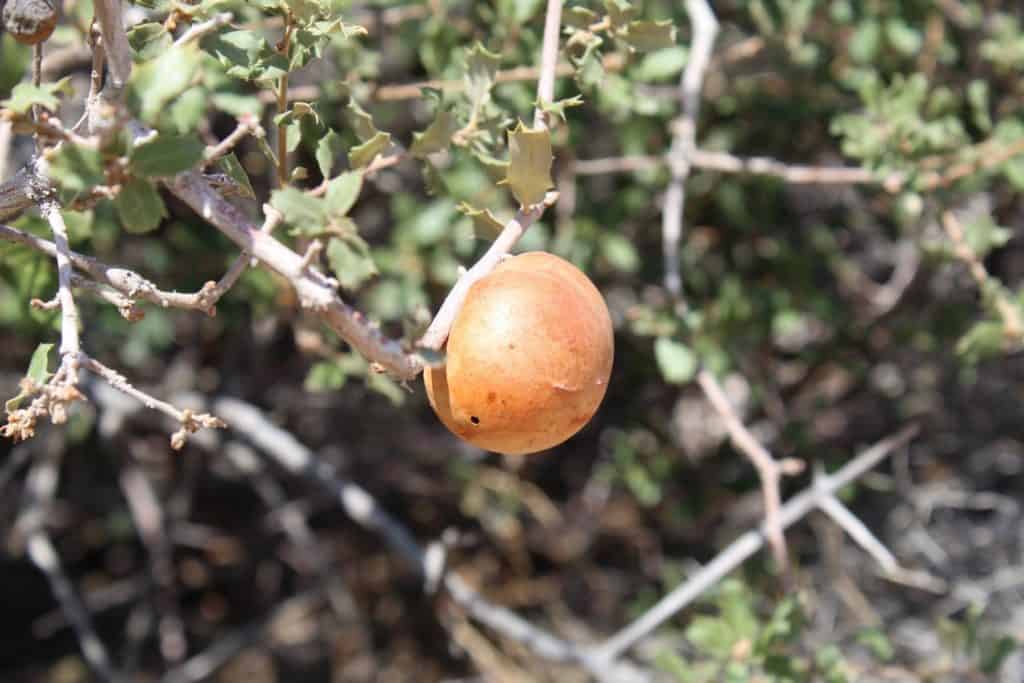
What are oak galls used for?
When gathering oak galls for medicinal uses, you don’t want to get the galls when they’re green on the tree. You also don’t want to get them when they’re black on the ground. What you’re looking for is a blond color. You also want to look for the holes because you want to make sure that the wasps have left the gall.
Inside the gall is a pith. The pith is sterile and we use it in herbal medicine as a powerful hemostat that stops bleeding. If you’re ever out in the woods and there are oak galls, you can take this pith, put it on any kind of cut, and it will disinfect and stop the bleeding. Isn’t that cool?
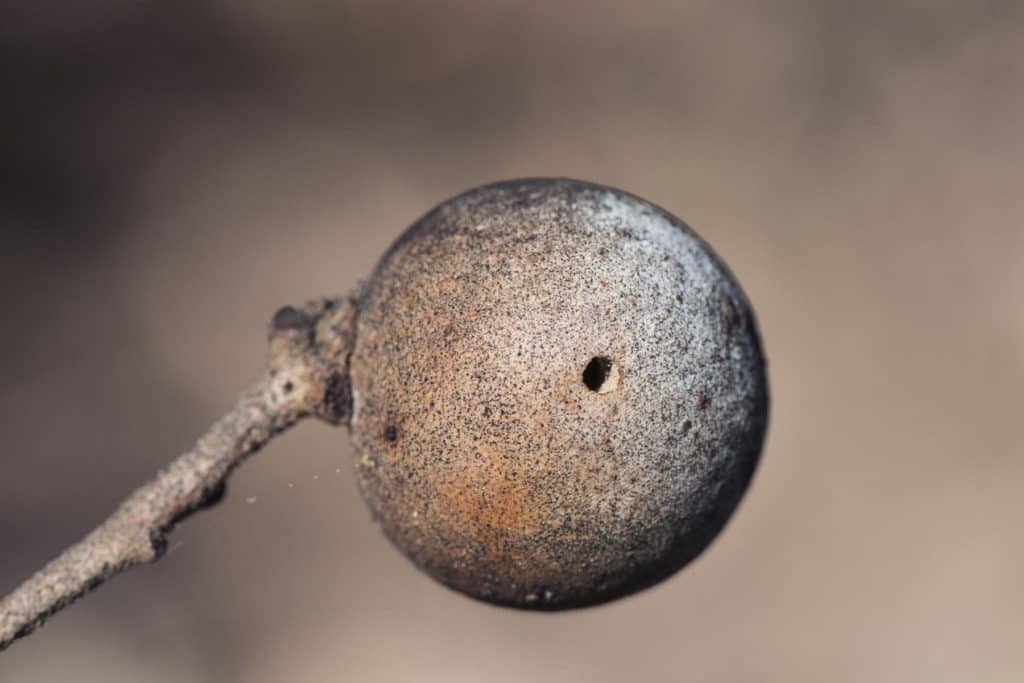
I have one of these oak galls in my first-aid kit. They last for years. I like to leave the gall whole until I use it. When you’re ready, you just take some of the pith, put it on your cut or your scrape or just anything that’s bleeding, and it will stop the bleeding and disinfect the cut. It’s incredible!
I would love to hear from you! Do you have oak trees where you live? If you do, have you ever seen oak galls? Have you ever tried oak galls for medicinal uses? Please share in the comments below.
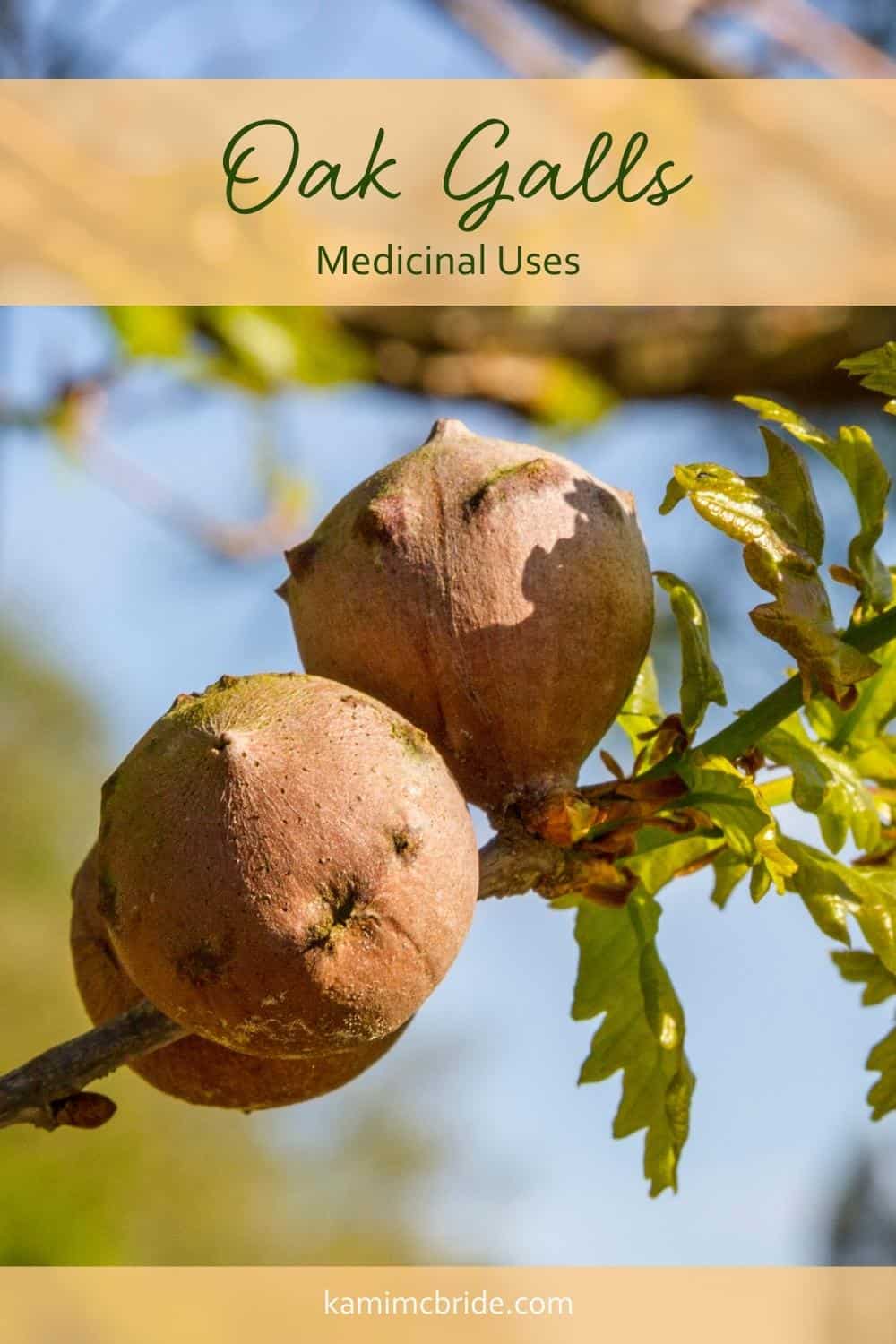



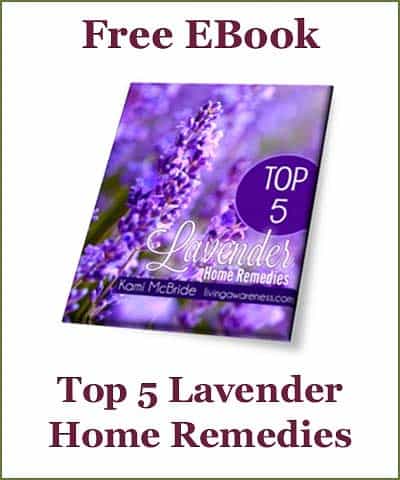
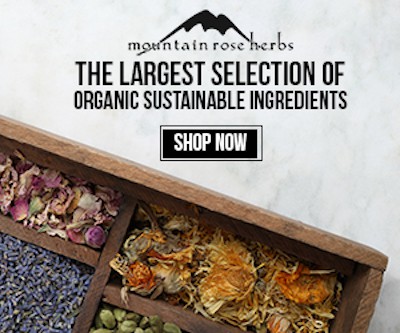
I’ve learned recently that oak galls (I always knew them as oak balls) were used by Native Americans to transport a hot coal from camp to camp without having to start from scratch. Have you heard of this or can anyone provide addition info? I tried it, but the coal was cold within a half hour.
Thank you for the information.
I will be looking for these in northern Ontario.
I live in an oak woodland which is mostly Blue Oaks and Live Oaks and they do form these galls, too. They look beautiful at the blond stage: sometimes they have almost “red cheeks”, which makes them look like little apples. I know about the gall wasps, but had never heard about the use of the galls as a styptic: how wonderful! I had used Cayenne and Yarrow for that, but that’s not always practical. It’s good to have another trick in the bag, so to speak, and such a beautiful one, too: thanks for sharing that!
Interesting!!! I have NEVER heard about these….nice to know. Now I’m going to looking for them 🙂
I just learned today what these strange hard odd ball looking things were on the ground. Always been curious about them. Now I know!! Thank you
This is wonderful news. In by my neck of the woods folks believe that the tree is sick.
I’m absolutely mad for the wonderful oak gall and just made some ink using a few. In the past, documents like the Declaration of independence and the Magna Carta were written in oak gall ink. They’re in abundance here on the northern Cali coast. There are many different kinds of galls, some of which are rather small and hard to notice, and galls can be found on other kinds of trees. If I still colored my hair, I would try the gall!
I just saw these the other day on a tree and wondered what on earth they were, so cool that this popped up and now I know!
Hello Kami, I see so many of these in the woods, I had no idea they were medicinal! You are a wealth of information.
When I was young I saw them on the teees and knew there were wasps inside.
Never heard of their medicine inside. Thank you.
I am 73 years on this beautiful earth and learn so much everyday again 🙏🏻💞
Awesome information! I’m grateful. I learned in an ethnobotany class that the fluid in the fresh galls can be squeezed into the eyes to reduce inflammation and irritation from things like allergies.
I have been intrigued by oak galls for a long time. But I have never opened one up to see what the “pith” is. I’ll have to go searching now and try to find one and open it. Thanks for this info! Marianne
Wow, thanks Kami for sharing this! Another gift from the mighty oak, and mighty wasp :)! Does it stop the bleeding as well as yarrow does?
Hello, Kami – great info! I’ve seen those galls years ago in NH, but was not aware of their usefulness. Thank you.
That is so cool and valuable to know. I don’t know my Oak’s but I will keep my eyes open from now on. It’s beautiful when you discover how everything around us serves a purpose.
that’s extrodinary..thank you.
I did a presentation of these in the woods at pepperwood preserve in the california naturalist training.The gall is considered to be an entire ecosystem for the wasp, it contains everything they need to survive,.even tho it has a parasitic relationship to the oak tree.
The parasidic wasps that emerge from the gall are very tiny and really hard to see, however they are mighty and important benifical insects that distroy bad bugs by laying eggs inside the bad bugs, the eggs then hatch and devour the bad bugs
I live in CA and my dog likes to bring these in the house because he thinks they are toys, like his tennis balls! Now I know what they are and that they are great for a 1st aid kit. Awesome thanks!
I’ve never seen an oak gall before. I’m in southern Ontario Canada. I will keep my eyes peeled. We have loads of golden rod galls though. I’ve heard they can be a survival food (eat the larva in winter)…not something I’d do unless my life literally depended upon it, but this makes me wonder if they could have another use after the fly has left?
This is fun. I have seen these but didn’t know what they were. We mostly have red oaks here in my part of Maine but there are white and some others in other parts of Maine. Fun to know about the bleeding use and the mordant use!
This is so interesting. I’ve seen those on our oak trees but never knew what they were. I’ll have to save a few of them going forward.
Wow! Did’t know it was medicinal. I collect them to use as a mordant in dyeing cotton or linen fibers.. (helps the dye set). Nature rules :-} Thanks for the teaching!
I am also in Oregon, the southwestern part. I didn’t know they were medicinal. I used to crush them because I have a goat and she eats acorns and I read somewhere that these are poisonous if your animals try to eat them. I will definitely save them from now on.
Hi
We use galls with henna to colour grey hair. We fry few galls in oil and after they become charcoal black we crash them and mix it with henna and another herb and cover our hair as we do with normal henna. The result we get is black hair naturally
I’m also in Oregon, and we have several oak trees on our land. The little gransons love to play with the galls, and I am fascinated to learn of their medicinal properties. We will have to keep an eye out for the blond/golden ones this year. Thank you for sharing this.
Thank you Kami,
I have always loved oak trees and appreciate them even more:-)
My sister & I always wondered what they were, they are abundant on her Minnesota country ranch. It’s surrounded by White Oaks. Thanks for the lesson!
You are welcome
We have galls in our Oregon White Oaks. I didn’t know about their healing properties. Are all galls equal in value? Apparently there are several types of wasps that create them and in different parts of the tree. I have read that they also make a great ink or dye. I am interested trying out both this year. Thank you!
That was fascinating and useful. I love to hike and will check for these. I’m in the Pacific Northwest. Thanks for the info
Yes…I have red and white oaks. I believe I have seen these, but never did anything with them. Will keep my eyes open this year though.
Hello from Minnesota…I love where you live!
Humm I never noticed any but just learning. I will definitely keep an eye out for them.
Kami i am in Irelandand never saw agall its very interesting